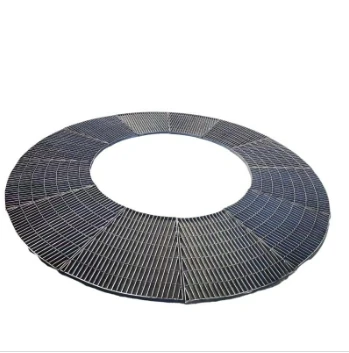Exploring the Intersection of Channel Dynamics and Grate Design in Modern Engineering
Channel and Grate Exploring Their Role in Modern Infrastructure
In the realm of modern urban engineering, the concepts of channel and grate play pivotal roles in managing water flow, preventing flooding, and maintaining the integrity of infrastructure. Though often overlooked, these components are essential to the functionality and sustainability of urban environments. This article explores the significance of channels and grates, their applications, and their contributions to effective drainage systems.
Understanding Channels
A channel is a defined passage or pathway that directs the flow of water, either naturally occurring like riverbeds or man-made like drainage ditches. The design and construction of channels are crucial, as they determine how effectively water flows through a given area. Channels can take various forms, including open-air ditches, culverts, and even piped systems. Their primary objective is to manage stormwater runoff, especially in urban areas where impermeable surfaces like concrete and asphalt dominate.
The effectiveness of a channel is influenced by several factors, including its shape, slope, and material composition. For example, a V-shaped channel can be more efficient in directing flow than a flat-bottomed one, while smooth materials can reduce friction and allow for faster water movement. Moreover, channels also play an essential role in reducing soil erosion, as they help maintain the natural balance of water flow and sediment transport.
The Role of Grates
Grates, on the other hand, serve as critical components of drainage systems. Typically made from metal or plastic, grates are strategically positioned over drainage inlets to prevent debris, leaves, and larger objects from clogging the water flow. They act as protective barriers, ensuring that the drainage system remains functional and efficient.
The design of grates can vary significantly based on their intended use. Some grates have larger openings to accommodate higher volumes of water flow, while others are designed to filter out smaller debris. In areas prone to flooding, robust grates can prevent blockages, enabling channels to carry excess stormwater effectively. Additionally, grates contribute to public safety by preventing accidents caused by open drainage systems.
channel and grate

Channel and Grate Systems in Urban Planning
In urban planning, the integration of channels and grates is vital for sustainable water management. As cities continue to grow, the risk of urban flooding increases due to the high volume of water runoff. Well-designed channel and grate systems help mitigate these risks by enhancing water quality and reducing flood potential.
Modern technologies have advanced the design of channels and grates. For example, permeable grates allow for the absorption of some stormwater into the ground while still managing surface runoff, effectively mimicking natural water filtration processes. Similarly, channels incorporated with vegetation—often referred to as bioswales—can further enhance water quality by utilizing natural filtration methods.
Environmental Benefits
The environmental benefits of effective channel and grate systems extend beyond mere flood prevention. By managing stormwater runoff, these infrastructures help to protect local ecosystems from pollution. Runoff often carries harmful substances, including heavy metals, oils, and sediments, directly into rivers and lakes. Channels and grates help to mitigate these effects by directing and treating water before it re-enters natural bodies of water.
Moreover, green infrastructure solutions that utilize channels and grates can promote biodiversity. By allowing for the integration of plants and habitats, urban areas can support wildlife and enhance the overall resilience of the ecosystem.
Conclusion
In conclusion, channels and grates may seem like simple components of water management systems, but their impact on urban infrastructure is profound. They play essential roles in flood prevention, environmental protection, and enhancing urban sustainability. As cities continue to evolve, the importance of integrating effective channel and grate systems will only increase. It is imperative for urban planners, engineers, and environmentalists to work collaboratively to design solutions that not only meet the immediate needs of drainage and flood control but also promote a healthier urban ecosystem for generations to come.
-
The Smarter Choice for Pedestrian AreasNewsJun.30,2025
-
The Gold Standard in Round Drain CoversNewsJun.30,2025
-
The Gold Standard in Manhole Cover SystemsNewsJun.30,2025
-
Superior Drainage Solutions with Premium Gully GratesNewsJun.30,2025
-
Superior Drainage Solutions for Global InfrastructureNewsJun.30,2025
-
Square Manhole Solutions for Modern InfrastructureNewsJun.30,2025
-
Premium Manhole Covers for Modern InfrastructureNewsJun.30,2025
